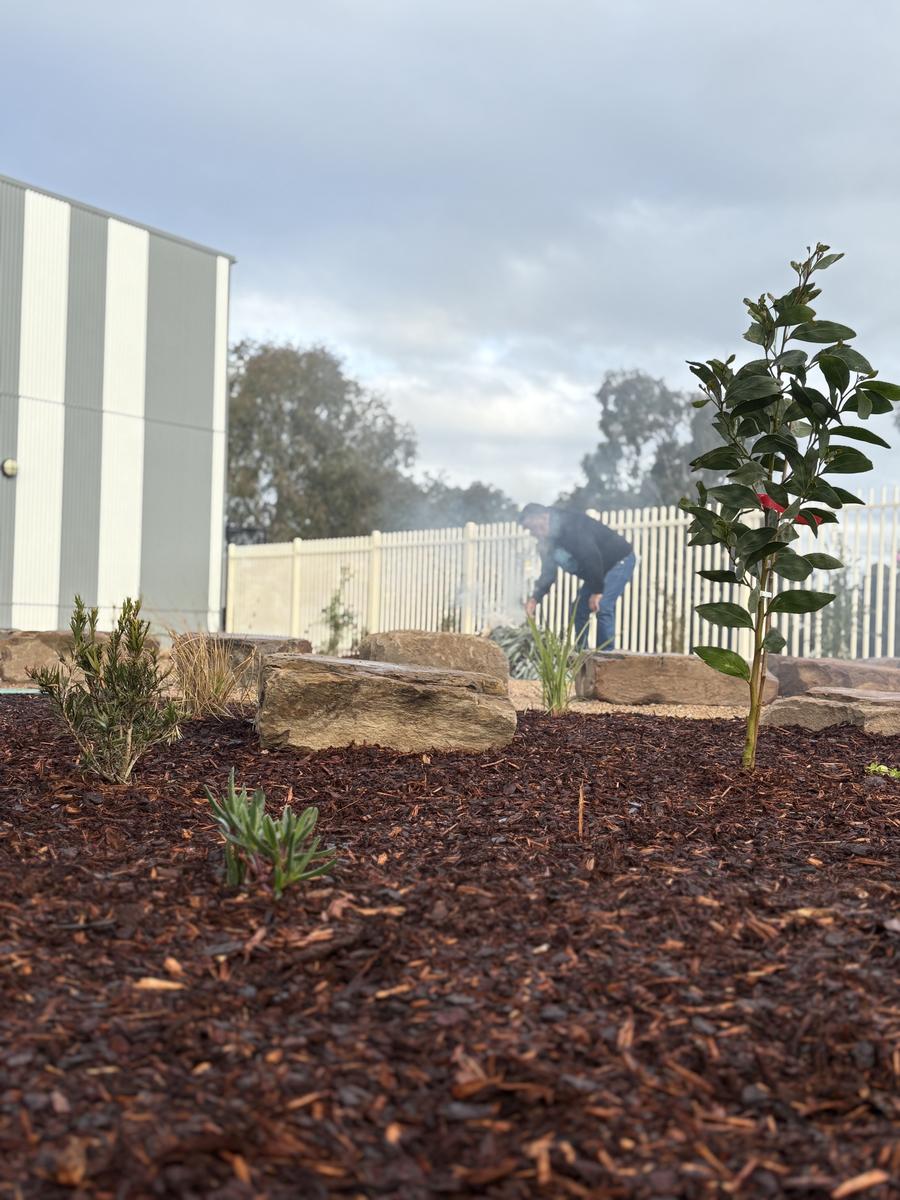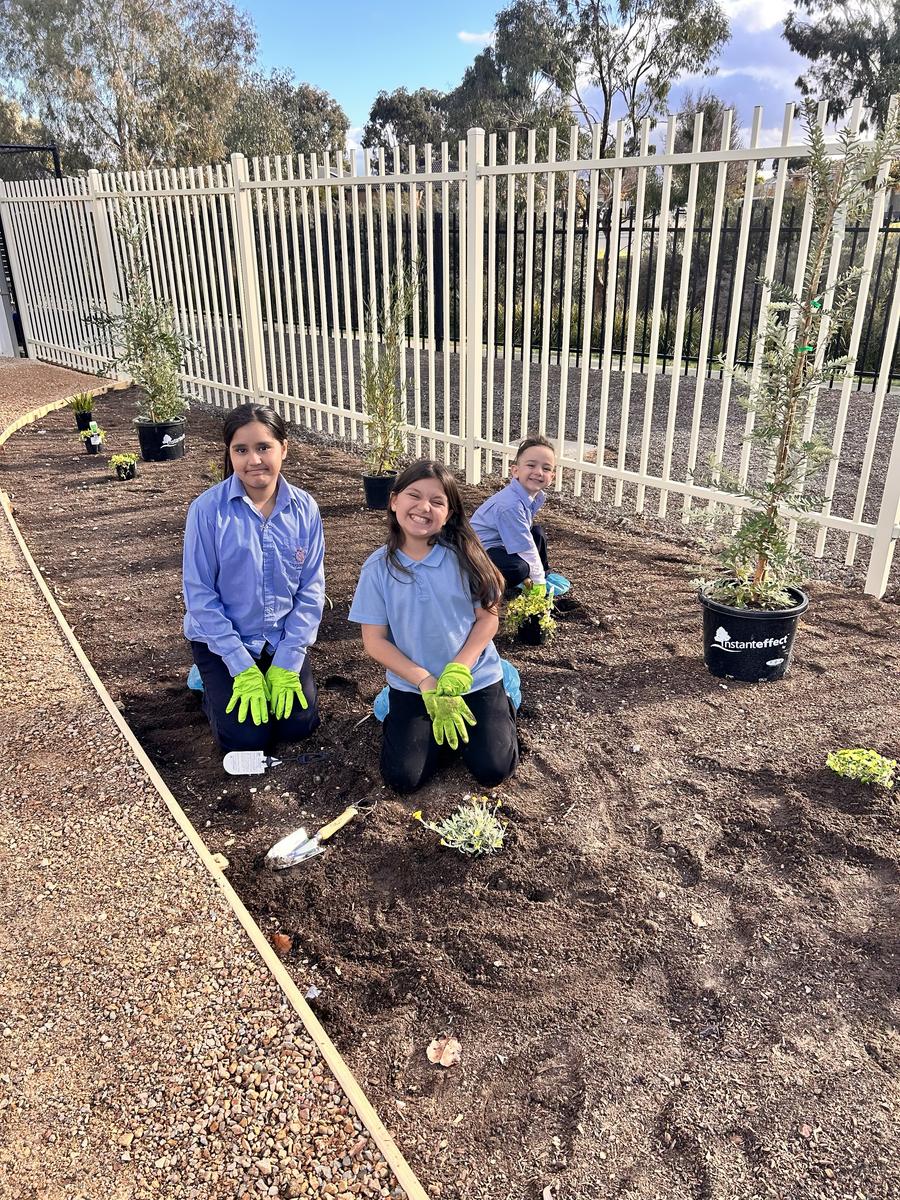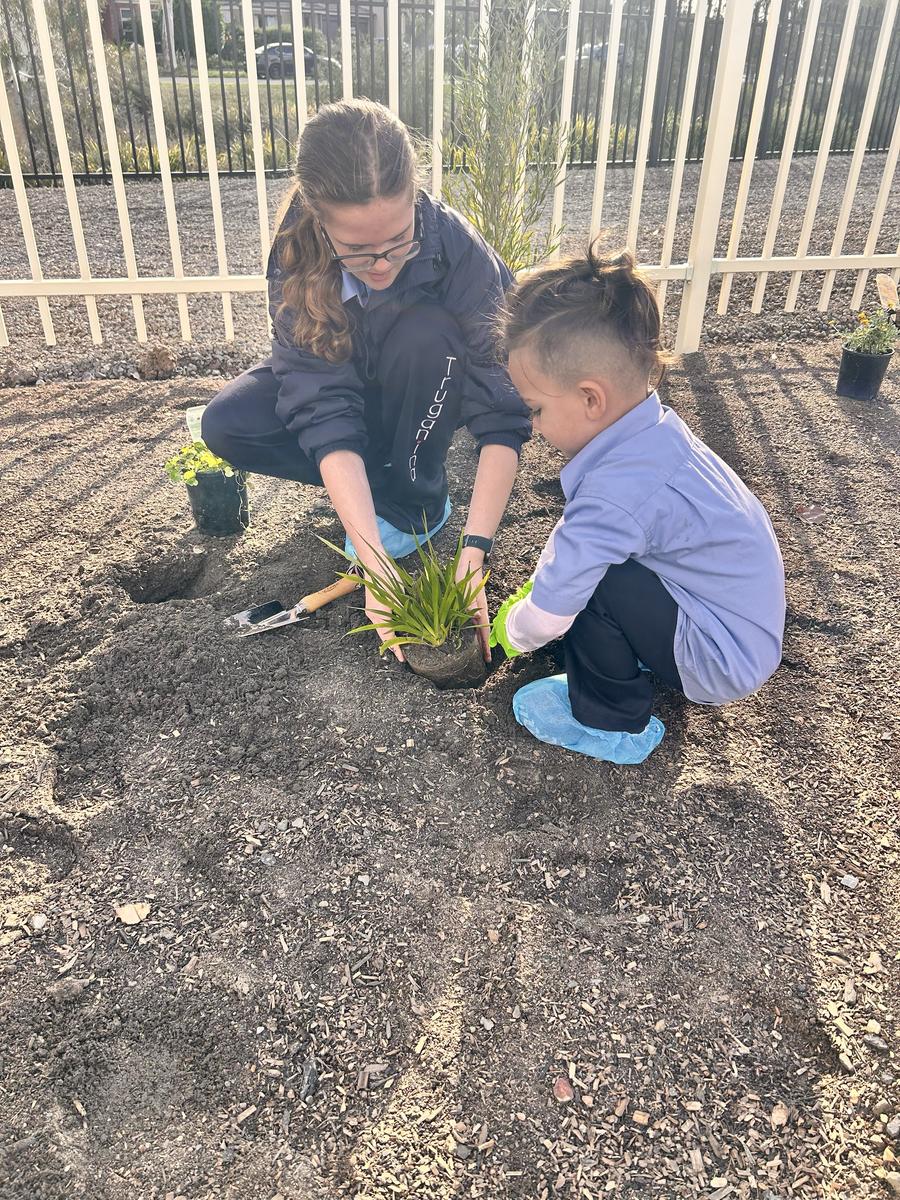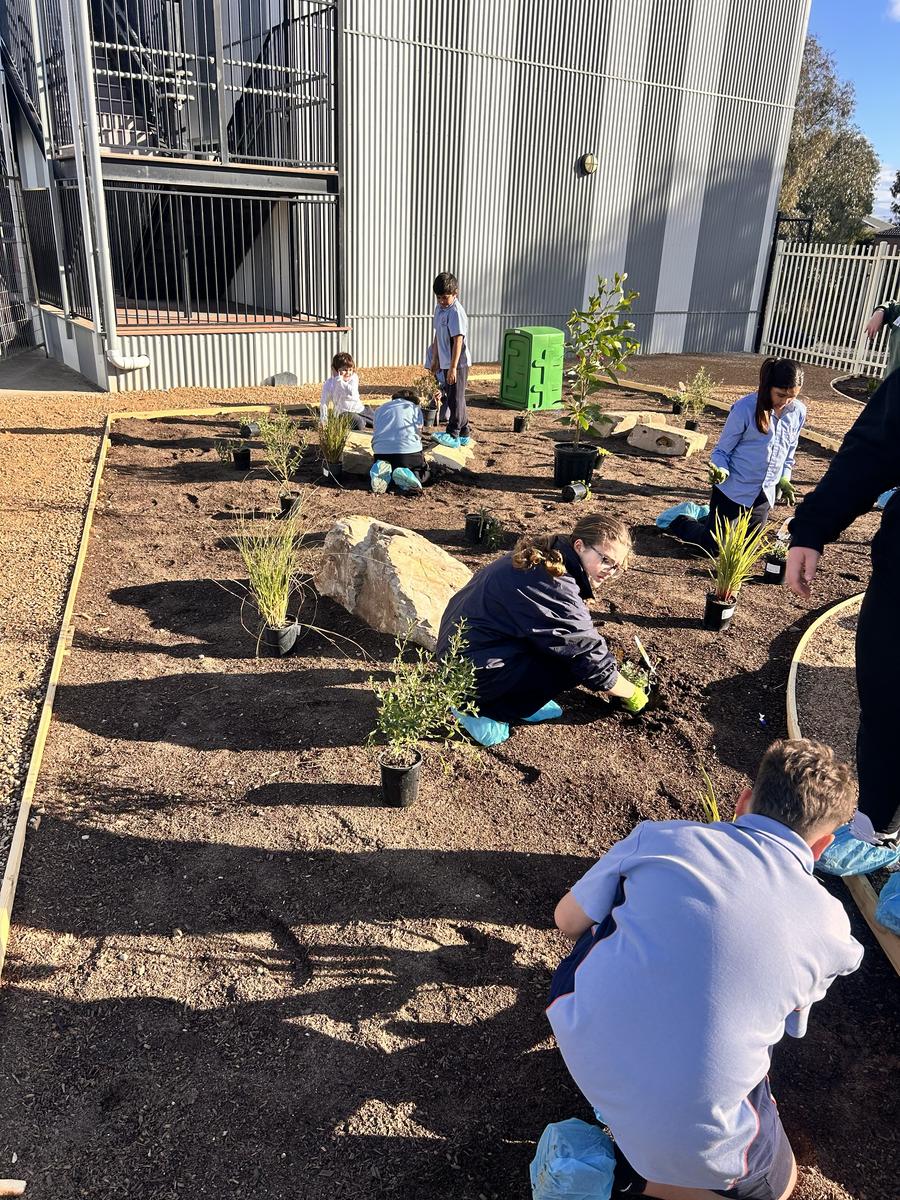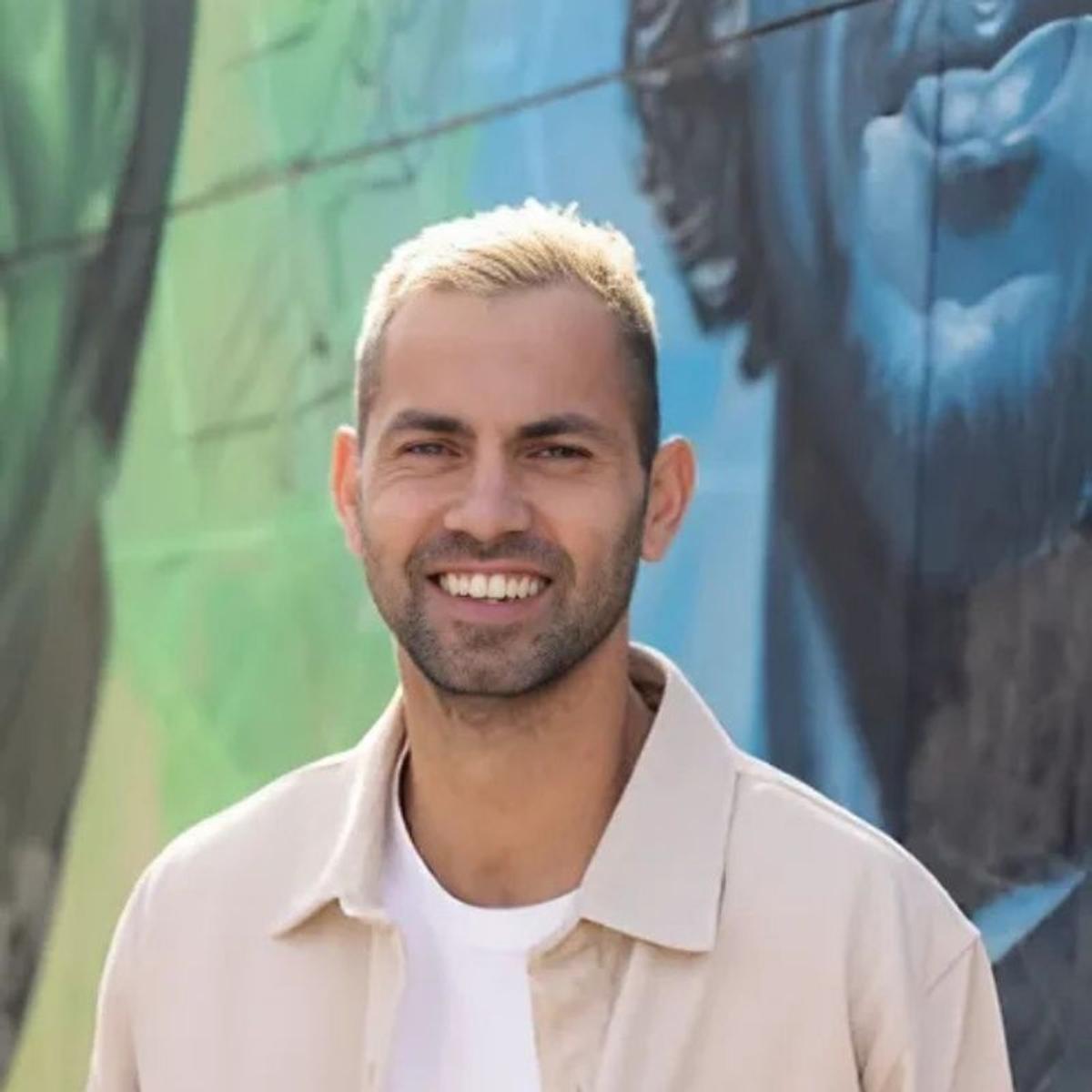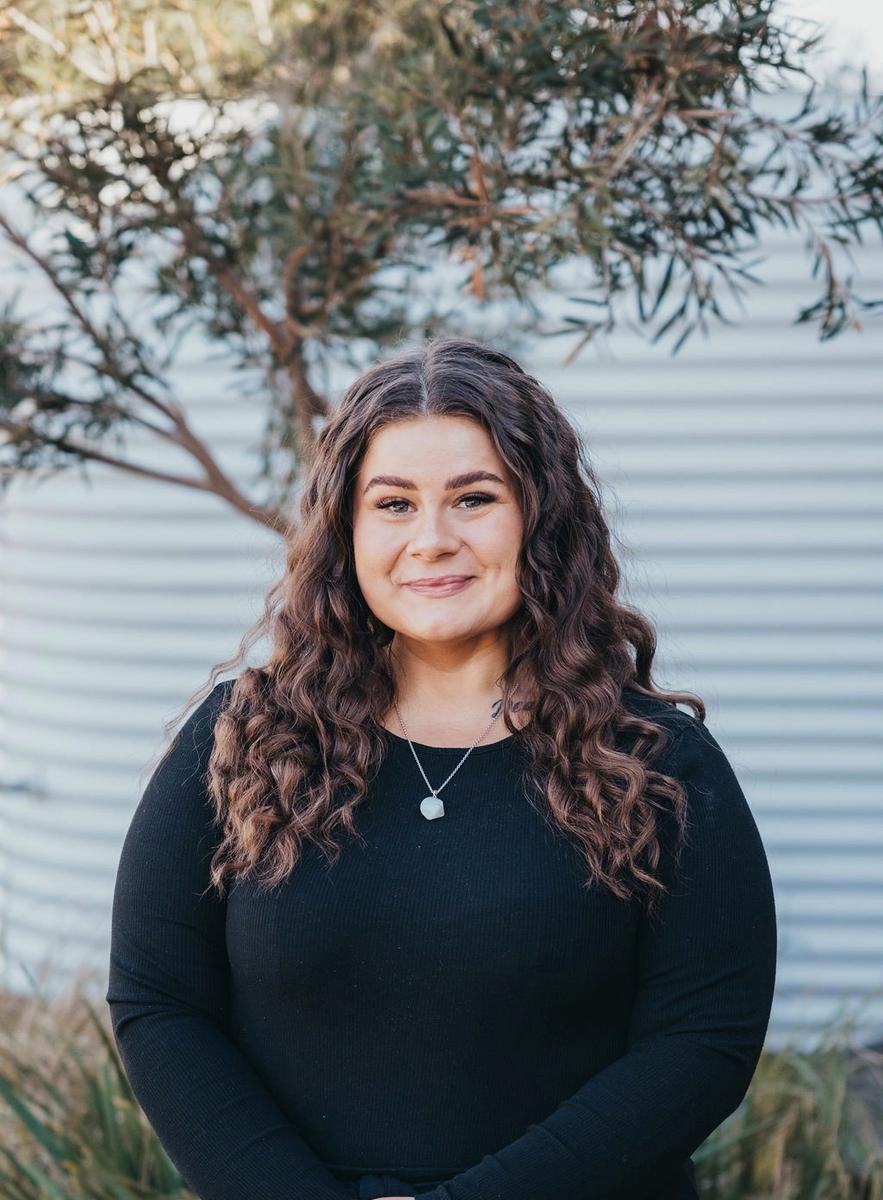Yarning, Planting, Listening: A Week of Culture and Connection

The Yarning Circle and Indigenous Garden
Our new Yarning Circle and Indigenous Garden have officially come to life - and it’s been a journey months in the making. Planning began back in 2024, starting from our previous Koorie Student Support Officer Jess Radford. In March this year, the plans started jumping off the page and into reality, with a focus on planting species native to the Wyndham area. We teamed up with All Green Nursery to select plants like Acacia pycnantha, Carpobrotus, Correa glabra and Dodonaea viscosa, and more.
The finishing touches came in July, when our Indigenous students rolled up their sleeves and planted all these native plants by hand in one afternoon. A beautiful space created with care, culture, and connection. Thankyou to our wonderful, creative and passionate 'Koorie Catch Up' students; Mia, Rhylan, Lana, Kira, Jade, Viktoria, Zahraa, Bailey, Yasmin, Aayden, Youssef and Geoffrey.
What does it feel like being apart of Yarning Circles?
This wasn't my first yarning circle, I've been in atleast 6 or more in my life. I like to get together with friends, family and even community members to yarn about everything that’s going on in our lives and support each other. It's a good opportunity to take in everyone's problems and to talk about it and release some of the weight of my chest.
- Lana
How long have you been aware of your culture?
I probably got more involved with my culture and heritage when I was around 11
- Jade
I grew up with my culture, I probably found out when I was about 6 - Lana
Have you been involved in a smoking ceremony before?
I had my first smoking ceremony experience around 13-14 years old with VACCA (Victorian Aboriginal Child and Community Agency) with school, where we visited Aboriginal farmland and saw Indigenous animals and plants. We got to feed and pet the animals and learn about my culture, how processes happen and why, and how everything works. We also were able to experience a smoking ceremony with the Nallei Jerring Program - Lana
Why do you think the Indigenous garden is important?
The Indigenous Garden is important to signify the land we walk on and the land that people before us own. We can also share this with those who lives on and share that with other cultures - Jade
What would you say to another student who might join next time?
Please be respectful of the enviroment - avoid jumping on and hanging off the fence and make sure your rubbish doesn't make it's way into the garden/yarning area. Use the space to yarn with your friends, teachers or class and embrace the culture of ours respectfully - Lana + Jade
Josh Eaton
Koorie Liaison Officer
Brushing up on Bush Talk: First Nations Dictionary
Yarning Circle: “Meeting Place”. A gathering of people who sit in a circle to share experience, knowledge, or ideas; a place where such a meeting is held.
Corroboree: A generic word for a meeting of Australian Aboriginal peoples. It may be a sacred ceremony, a festive celebration, or of a warlike character.
Cooee!: A shout that originated in Australia to attract attention, find missing people, or to indicate one's own location. When done correctly—loudly and shrilly—a call of "cooee" can carry over a considerable distance. It is also known as a call of help, distinct amongst the natural sounds of the bush.
Wominjeka: A greeting in the Woi-wurrung language, which generally translates to "welcome" or "hello," but carries a deeper meaning of "come with purpose" or "come here to learn and listen". Traditionally spoken by the Wurundjeri people, and the Boon Wurrung language of the Bunurong people, both of the Kulin nation in the Melbourne area.
Yarning with Jess Radford
Koorie Engagement Support Officer - Department of Education + North Wyndham Area
Can you share a little about your mob and where you’re from?
I am a proud Palawa woman from the Paredarerme and Trawlwulwuy mobs.
Can you please share with us the cultural symbolism/purpose of a smoking ceremony?
A smoking ceremony is a traditional Aboriginal practice and serves as a powerful ritual for cleansing and healing both individuals and the environment.
Here on Bunurong Country, a Traditional Owner may use leaves from Manna Gum, Silver Wattle, Kangaroo Grass - among other native plants. Each plant that is used, has a sacred meaning, and a Traditional Owner will be able to explain what they are during their smoking ceremony.
Can you walk us through what’s involved when opening a Yarning Circle, from your perspective?
Personally, I think it is really important to connect with the Aboriginal Community. Starting with the Children and families at the school itself, the Local Aboriginal Communities, the Local Council, speaking and building on existing connections with Local Elders - really taking the time to listen to the wise words of our Elders and their lived experiences. They have a wealth of knowledge that I believe is truly undervalued.
Visit other Yarning Circles, hear the stories behind them, share organisations and ideas.
Student voice and feedback is really important - let the students design and co-create the space. Afterall, this is a space for them.
What role do yarning circles play in healing, learning and community building?
Yarning circles are a safe place for all people to meet and ‘have a yarn’. Yarning Circles have been around for such a long time, and I believe the power of a Yarning Circle is truly underutilised.
Yarning circles are a powerful cultural practice that foster healing through shared story, learning through respectful dialogue, and community building through connection and inclusion. While rooted in Indigenous traditions, their principles are universal and increasingly being adopted in education, mental health, and justice settings for their holistic and human-centered approach.
How has your cultural journey shaped the way you support students and families in your role?
I grew up being proud to be Aboriginal, but as I got older I experienced a lot of racism and people dismissing my Culture because I was white presenting. During my teenage years when my Paternal Grandfather passed away, my culture turned into something I hid away.
While I was working at Truganina College, I soon discovered that there was young mob going through similar experiences. I realised I had to lead by example and embrace my Culture to ensure our Community felt safe. This then started my journey of creating a safe place for these young people and their families.
I then moved into my current role of a Koorie Engagement Support Officer (KESO) with the Department of Education, as I wanted to support schools, Early Learning Centres and be a voice for our Aboriginal and Torres Strait Islander communities - on a larger scale. If I can support the Education setting to be more inclusive, and understanding of our Culture, this can and will create a safe space for all First Nations people which will then lead to better outcomes for us all.
Did you know?
There are many suburbs in Melbourne with Indigenous names or names derived from Indigenous languages, even our very own Truganina! Take a look;
- Truganina: Derived from the name of Tasmanian Aboriginal woman, Truganini, who had visited the area.
- Naarm (Melbourne): This is the traditional name for Melbourne, signifying the broader area of the Kulin Nation.
- Ngár-go (Fitzroy): This Wurundjeri name for Fitzroy translates to "high ground".
- Quo-yung (Richmond): The Wurundjeri name for Richmond.
- Yálla-birr-ang (Collingwood): This name, also Wurundjeri, means "the wooden point of a reed spear".
- City of Yarra: The name "Yarra" itself is derived from the Wurundjeri term "Yarra Yarra," meaning "it flows".
- Banyule: The council's name comes from the word "Banyool," meaning "hill".
- Boroondara: This name translates to "where the ground is thickly shaded".
- Brunswick: The Wurundjeri name for Brunswick is Bulleke-bek, potentially incorporating the suffix "bik" meaning "ground/country/place".

